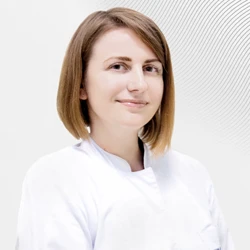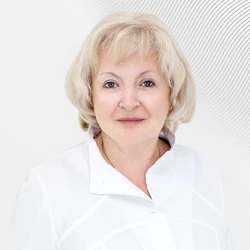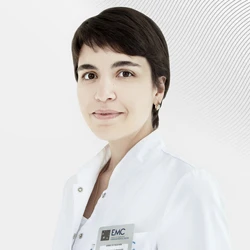Treatment of vascular atherosclerosis
Which organs are affected by atherosclerosis
Atherosclerosis can affect the arteries throughout the body. There are different manifestations of atherosclerosis depending on the arteries it affects.
-
Carotid artery disease is a form of atherosclerosis involving damage to the arteries that bring blood to the brain. This form of atherosclerosis can lead to stroke.
-
Coronary artery disease, also called coronary artery disease, is a form of atherosclerosis that affects the coronary arteries that bring blood to the heart muscle. This form of atherosclerosis can cause chest pain and lead to a heart attack or acute myocardial infarction.
-
Renal artery stenosis is a form of atherosclerosis that affects the renal arteries that bring blood to the kidneys. This form of atherosclerosis can cause high blood pressure or lead to kidney disease.
-
Peripheral arterial disease is a form of atherosclerosis that affects the arteries that bring blood to the arms and legs. People with this disease experience pain, tingling, or numbness in their legs when walking.
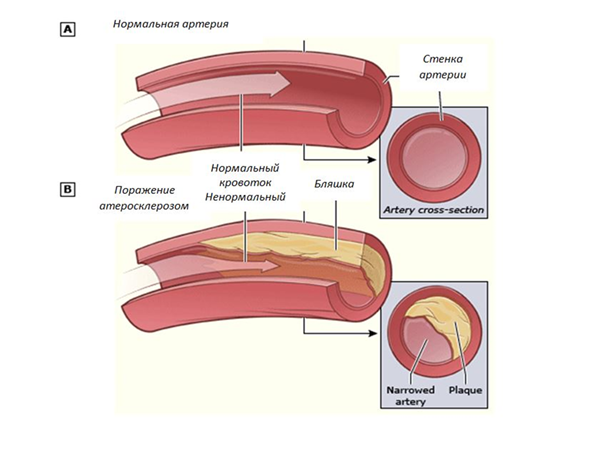
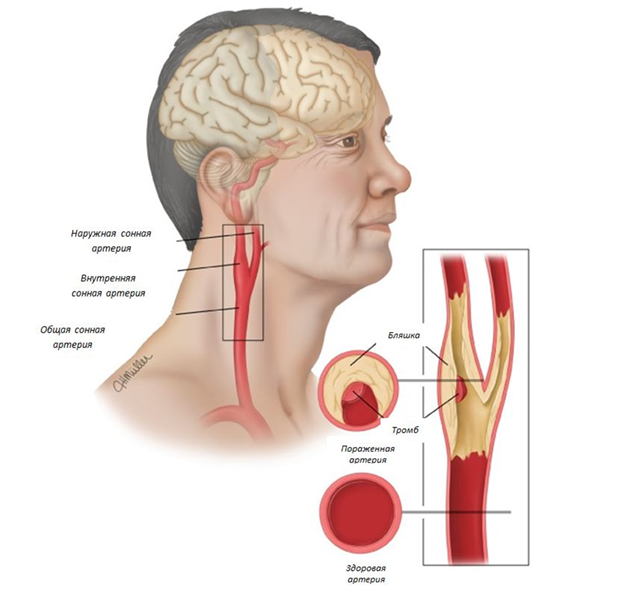
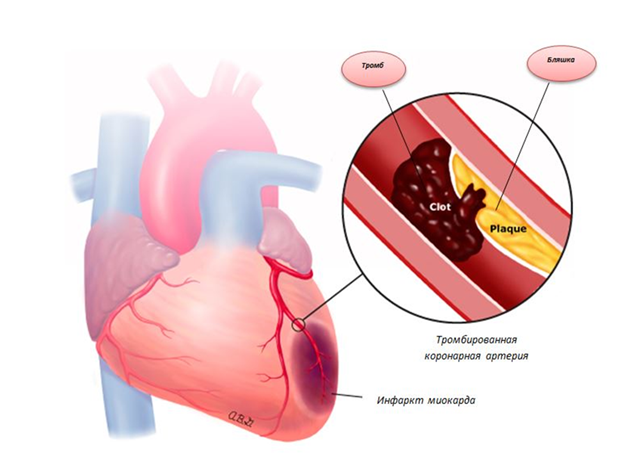
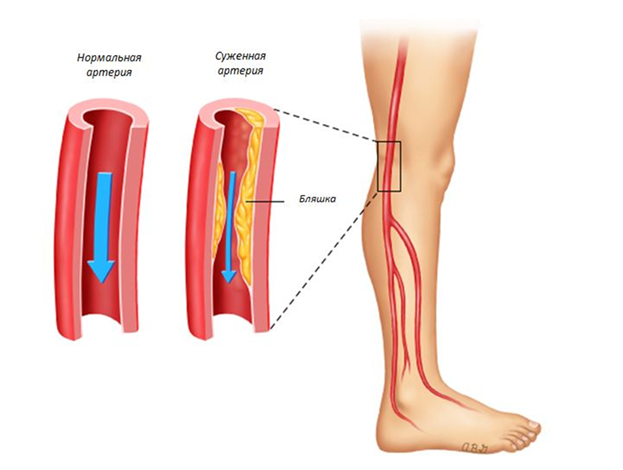
What is the cause of heart attacks, strokes and other problems with atherosclerosis
-
The plaque may be too large and reduce blood flow to certain parts of the body. This can cause symptoms (such as pain) in a part of the body that is not receiving enough blood.
-
The plaque may be unstable with elements of laceration and hemorrhage. When this happens, blood clots form inside the artery and block blood flow to the tissues. This is what happens during a stroke or heart attack.
How does atherosclerosis occur
The plaque may be too large and reduce blood flow to certain parts of the body. This can cause symptoms (such as pain) in a part of the body that is not receiving enough blood.
The plaque may be unstable with elements of laceration and hemorrhage. When this happens, blood clots form inside the artery and block blood flow to the tissues. This is what happens during a stroke or heart attack.
Atherosclerosis begins in childhood with the development of fatty veins in our main vessel, the aorta. Atherosclerosis progresses with age. Fatty streaks are the first phase of atherosclerosis. Histologically, there is a focal thickening of the intima with the accumulation of lipid macrophages (foam cells) and extracellular matrix. Smooth muscle cells can also fill the lining layer of the vessel, the intima, some of which can arise from hematopoietic stem cells, migrate and multiply. Lipids accumulate at the beginning of the formation of a fat strip. Foam cells are a hallmark of early atheroma, early atherosclerosis. As these lesions expand, over time, the fatty veins turn into atherosclerotic plaques. Many factors contribute to the pathogenesis of atherosclerosis, including endothelial dysfunction, dyslipidemia, inflammatory and immunological factors, plaque rupture, and smoking.
Risk factors
Who is at risk of developing atherosclerosis? A person has a higher chance of developing atherosclerosis if he or she:
-
Has high cholesterol or triglycerides
-
Has high blood pressure
-
Has diabetes mellitus
-
Smokes
-
Improper nutrition
-
Is overweight or has decreased physical activity
-
Has a mother or father who suffers from atherosclerosis before the age of 50
Prevention of atherosclerosis
A common test that is often performed in people who might have atherosclerosis is called a "lipid profile." It is a blood test that measures the amount of various forms of fats and cholesterol.
Can the problems caused by atherosclerosis be prevented? Yes! To reduce your chances of having a heart attack, stroke, or related problems, follow these steps::
Visit your cardiologist, who will help you identify all the risk factors, understand the condition of your body, make an examination plan, and, if necessary, treat your condition in a clinic to determine your prognosis.
Be sure to take the medications your doctor prescribes to treat high blood pressure, high cholesterol, and to prevent blood clots.
-
Lose weight (if you are overweight).
-
Choose a diet rich in fruits, vegetables, and low-fat dairy products. Don't eat too much meat, sweets, or refined grains.
-
Do something active for at least 30 minutes a day on most days of the week.
-
Quit smoking (if you smoke). Ask your doctor for help with this.
-
Limit the amount of alcohol if you drink.
According to the conducted studies, a combination of three factors, such as hypercholesterolemia, increased diastolic pressure (above 90 mmHg) and cigarette smoking, increases the number of deaths from coronary insufficiency by 8 times, a combination of two factors – by 4 times and the presence of one factor – by 2 times compared with the control group persons of the same age who do not have the above-mentioned risk factors. Presumably, in the presence of four or more risk factors, the synergy of action increases to an even greater extent. This puts on the agenda the organization of multifactorial prevention of atherosclerosis in a broad population plan.
And a separate issue is the stratification of the risk of atherosclerosis in children. Cholesterol screening is recommended once for children aged 9 to 11 years and again between the ages of 17 to 21 years. In addition, children aged two years and older who have one or more of the following risks should be screened:
-
A family history of high cholesterol or lipids or early cardiovascular disease. Family history is defined as a parent, sibling, or grandparent with a heart attack, stroke, or peripheral vascular disease (blockage of large blood vessels in the arms or legs) before the age of 55 for men and <65 years for women.
-
Obesity and/or high blood pressure
-
Medical diseases related to cardiovascular diseases (diabetes mellitus, kidney diseases).
The following screening tests are recommended for children who have one or more of the above risk factors:
-
Determination of cholesterol and lipids in the blood (blood sampling before the first meal or drink of the day)
-
Fasting determination of total cholesterol and high and low density lipoproteins for children solely due to age (from 9 to 11 years and from 17 to 21 years)
Comprehensive diagnosis and treatment of vascular atherosclerosis
EMC patients have access to the most modern methods of diagnosis and treatment of cardiovascular diseases. Our specialists offer an individual treatment regimen for each patient based on the recommendations of leading European cardiological societies and the results of multicenter randomized trials in the field of prevention, diagnosis, and treatment of vascular atherosclerosis and related diseases.
Diagnosis of vascular atherosclerosis
According to the results of the cardiologist's examination, the following studies may be prescribed:
-
Blood tests – blood lipid profile (cholesterol complex) and blood sugar level.
-
Electrocardiogram
-
Stress tests
-
Ultrasound echocardiographic examination of the heart (ECHO-KG)
-
Transesophageal echocardiographic examination of the heart
-
Duplex and triplex ultrasound examination of blood vessels
-
Coronary angiography, angiography of the aorta and its branches (extra– and intracranial vessels of the brain, arteries of the lower extremities and mesenteric arteries)
-
MSCT and MRI of the heart and blood vessels
Surgical procedures for the treatment of atherosclerosis
In some cases, with the progression of the disease, surgical treatment of the consequences of vascular atherosclerosis is necessary:
-
Angioplasty and stenting of arteries of any basin (arteries of the brain, arteries of the heart, aorta, its branches and lower extremities)
-
Minimally invasive transcatheter replacement of heart valves.
Treatment at the EMC Heart and Vascular Clinic is an opportunity to receive care in Moscow according to the highest international standards, using modern equipment and effective treatment methods, if necessary in a comfortable hospital.
Why the EMC
The first and only clinic in Russia, created in the image of the world's leading clinics
EMC is a multidisciplinary center offering patients a high level of medical services and a personalized approach
Worldwide recognition and awards
 Learn more
Learn more
Worldwide recognition and awards
 Certificates and licenses
Certificates and licenses
Make an appointment for a consultation
Specify your contacts and we will contact you to clarify the details
Reviews
and new products of the EMC
.webp)
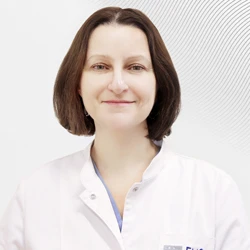

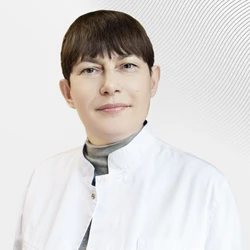
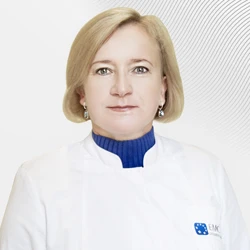
.webp)
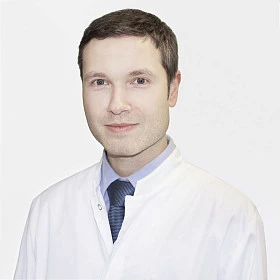
.webp)
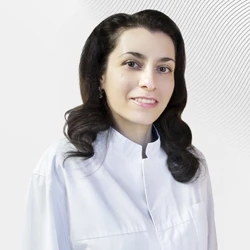
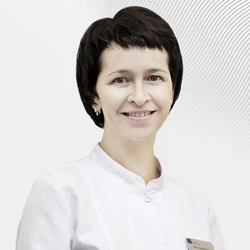
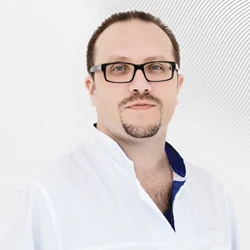
.webp)
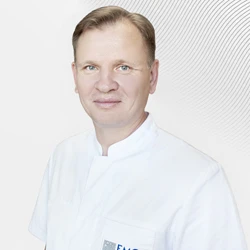

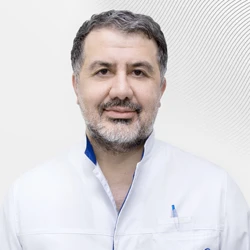
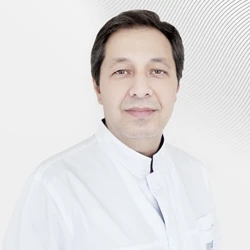
.webp)
